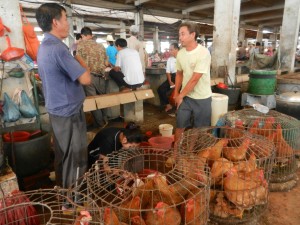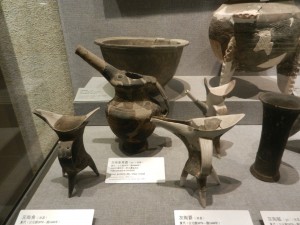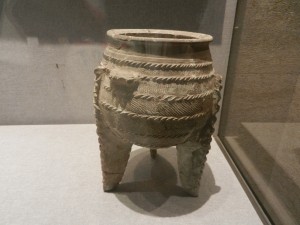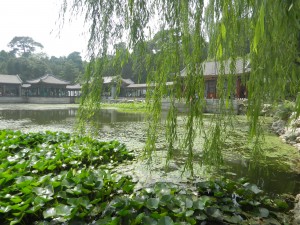Traditionally, the Chinese have seen themselves as rooted in the Shang Dynasty. So you can’t get more foundational than these posts on the Shang and its roots.
We’ll get really foundational in this post with facts about a neighboring culture that preceded the Shang and inspired it, The Erlitou.
Chinese culture had already been developing before the Shang Dynasty. By 5000 BCE villages that farmed had grown along the Yellow River and the Yangtze. In the Yangshao period (5000-3000 BCE), communities on both rivers became interlinked and traded goods with each other. During the Longshan period, urban settlements began to grow, and many Chinese cultural traits emerged. But Chinese civ’s momentum picked up during the Shang dynasty, so it’s one of the most important periods in world history to explore. Here are a few facts about the Erlitou period:
1. Ancient writings described a dynasty that existed before the Shang called the Xia. The Shang is supposed to have conquered it.
2. Archeologists discovered the Erlitou culture in the late 1950’s, and many scholars have thought that it was the Xia capital.
2. The earliest Erlitou finds are from around 2000 BCE–it thrived between the Longshan and Shang cultures.
3. The Erlitou culture flourished to the west of the Shang, in Shanxi and Henan. Its capital was a little east of modern Luoyang–both cultures consolidated large areas around the Yellow River.
4. The Erlitou developed a uniquely Chinese political structure, and the Shang and Zhou dynasties later adopted it–
Lu Liancheng and Yan Wenming, in The Formation of Chinese Civilization, wrote that a strict hierarchical lineage system evolved from existing clans. The Erlitou and Shang cultures unified themselves with a king, his lineage, and several ranks of elites. All shared kinship relations and worshiped common ancestors. So political power, familial relationships, religion and geography meshed in Chinese civilization’s early stages.
The ceramics in the 2 photos above reflect this network of ideas. The higher one is of several jue vessels, which held wine. The lower pic is of a ding, which held meat. Elites used both in ceremonies to honor ancestors. They were two of the most common forms that bronze makers were beginning to fashion–and continued to make in the Shang and Zhou dynasties.
Chinese thought has usually seen the world and universe as an integrated whole–the flows of yin/yang energies are based on this vision. Cultures in Mesopotamia at the same time conceived of gods as more distant from people. The ancient Hebrews, who emerged on its fringes, evolved to the idea of a single god who created and rules the universe with firm laws. But Chinese culture has emphasized a cosmos in which humanity, gods, spirits and nature share the same patterns, as though they’re a harmonious family.
Beijing’s Summer Palace (above) expresses this view of reality–water, plants and buildings blend into one landscape. But the Erlitou culture was heading in this direction 4,000 years ago. So we’ll look into daily life in Erlitou and Shang cultures in the next post.
You can also check out a Southeast Asian creation myth for another view of humanity as interwoven with nature and spirits.





Comments on this entry are closed.